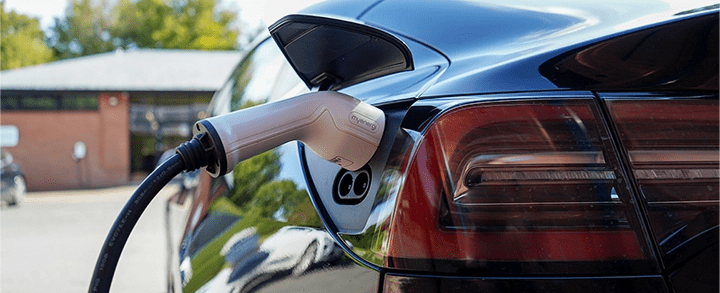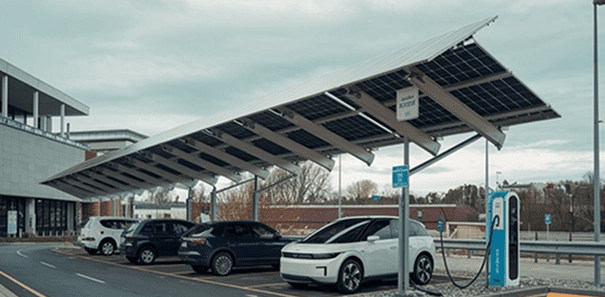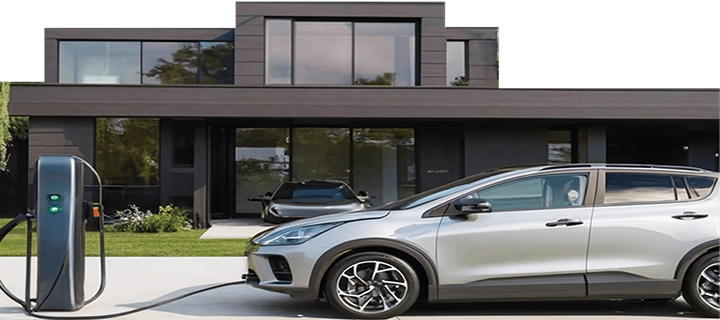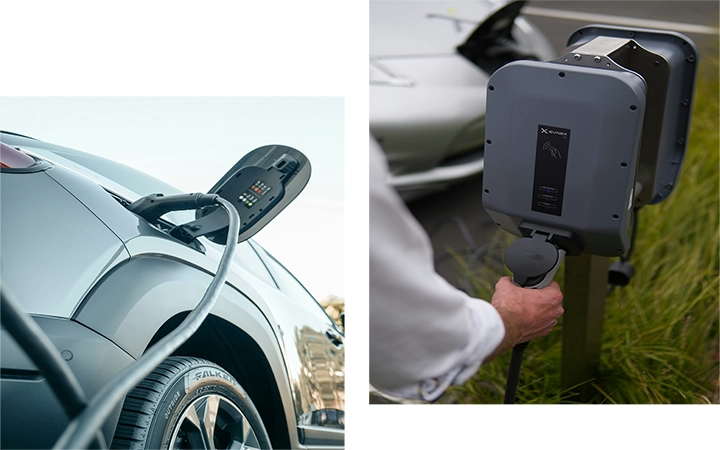EV Chargers Installation for
Home and Businesses
Choose Solar SME for Your EV Charging Needs
Charging Solutions for Your Needs Whether Home or Business
There are lots of choices for EV chargers, but not everyone—home or business—gets the best benefits from the same type of charger. Solar SME works with leading manufacturers to help you choose the right type of EV charger for your needs.
Homeowners may only need to install an EV charger at home for one vehicle, while a business may require multiple chargers for a fleet. Solar SME installs and coordinates permitting and design for all types of EV chargers.


EV Chargers for Home
Most homeowners own one or two electric vehicles and can charge them when the vehicles are at home. In many cases, a Level I or Level II EV charger is sufficient for home use. These chargers allow vehicles to plug in overnight or for extended periods, providing enough power for a full charge without requiring faster, more expensive charging options. Thus, they are the most practical and efficient choice for residential EV charging.
Business EV Charger
The requirements for EV charging vary greatly across businesses and homes. EV charging solutions can help companies in the retail, hospitality, and convenience sectors draw in new clients and foster consumer loyalty. For other companies to power their fleet, EV chargers might be necessary. Depending on their needs, most businesses will want a Level II or even Level III DC fast charging system for EVs, which enables two or more cars to charge simultaneously.

Discover the Power of Bidirectional EV Chargers
Bidirectional EV chargers are revolutionizing how we use electric vehicles and manage our energy. Unlike standard chargers, bidirectional chargers allow energy to flow both ways, enabling your EV to serve as a backup power source for your home or even supply excess energy back to the grid.

Why Consider Bidirectional Chargers?
Cost Savings
With bidirectional charging and Vehicle-to-Home (V2H) technology, you can charge your EV during off-peak hours and use it to power your home during peak times, potentially reducing electricity costs.
Backup Power
During blackouts, your car can be used as a dependable backup power supply with a bidirectional EV charger. With the assurance that you will always have electricity when you need it most, this cutting-edge technology provides peace of mind.
Grid Support
With bidirectional charging and Vehicle-to-Home (V2H) technology, you can charge your EV during off-peak hours and use it to power your home during peak times, potentially reducing electricity costs.
At Solar SME, we install state-of-the-art bidirectional chargers, including SolarEdge and Enphase systems. Pairing your charger with solar panels or battery storage can further maximize your energy savings. Learn more about our solar panel installation services.
Different EV Charging Levels for Different Needs
Before choosing an EV charger it’s important to understand the differences between each type of charger. No matter what type of charger you need, it’s important to have it professionally installed.
- Level 1 EV Chargers
When people buy an EV, it most likely comes with a Level I EV charger. These chargers use 110-volt electricity, like most common household appliances. They add a couple of miles of range to an EV every hour it’s plugged in. As such, they’re ideal for those who plug their EV in when at home and aren’t driving long distances every day.
- Level II Chargers
Many homeowners and businesses opt for these chargers, which use 240 volts like large appliances such as refrigerators or electric clothes dryers. They deliver more energy at higher amperage than Level I chargers. They can add up to about 30 miles of range for every hour of charging, making them ideal for fully recharging an EV overnight.
- Level III or DC Fast Chargers
Level 3 chargers, or direct current fast chargers (DCFC), are the most expensive type of charger, but they offer significant benefits for the right users. With higher voltages of between 400 and 1,000 volts—and high amperage—DCFC chargers can add up to 100 miles of range in half an hour. They can also charge an EV up to about 80 percent capacity in an hour, making them the preferred choice for long-distance EV travelers and businesses with high turnover rates.
Homeowners and Level I or Level II Chargers
The best option for most homeowners is a Level II charger. These chargers will fully recharge most EV batteries overnight. They cost more than Level I chargers but can charge a battery when electricity is least expensive, providing all the range most homeowners need for everyday driving.
Homeowners who travel less than 20 miles a day on average can get by using a Level I charger. However, they’re likely to need to charge up more at public Level II or Level III chargers where the rate for electricity is higher.

Businesses and Level II or Level III Chargers
Businesses have a wide range of EV charging needs, from providing charging services to customers to charging their fleet of EVs. No matter the need, Solar SME can provide the advice and the chargers that will meet your business’s requirements. For most businesses serving consumers like retail centers, business parks, hotels, and restaurants, a Level II charger can draw happy, repeat EV customers who want to spend a couple of hours or more charging.
However, gas stations, convenience stores, and retail outlets can also offer Level III charging to those customers who only want to stop for about 10 to 20 minutes for a quick refuel before hitting the road.

Do EV Chargers Work with Solar?
EVs use a lot of electricity—more than most solar systems can provide in a single day. However, with an energy storage system and electricity from the grid, EV chargers can work seamlessly with a solar system to power your vehicle. Find out how EV charging through solar panels can be the deal of the century. Even if your EV is using electricity from the grid, it is still a cleaner option than gas or diesel-fueled vehicles. Learn how to make an energy-efficient home.
Solar SME EV Charger Installation Service
If you are searching for the best home EV chargers near you, Solar SME is your trusted partner for EV charging solutions. We help you choose suitable charger according to your EV needs.
Get the Best EV Charging Solution!
Frequently Asked Questions
Bidirectional charging allows energy to flow from the grid to your electric vehicle (EV) and back, either to your home or back to the grid. By doing this, you can save your electricity costs and charge your automobile during off-peak hours. During a power outage, your car can also be used as a backup power source.
Although some homeowners may attempt a DIY installation, we strongly recommend using a skilled, professional installer such as Solar SME to ensure long-term dependability, safety, and compliance with local codes.
A regular charger only sends power to your vehicle, while a bidirectional charger allows the energy to flow both ways, enabling your EV to serve as a power source for your home or to supply energy back to the grid.
Most EV batteries will contain charge controllers that automatically disconnect the battery once it’s fully charged. That means you don’t have to worry about accidentally ovecharging your EV battery.
Currently, only a few electric vehicles on the market offer bidirectional charging. It is essential to ask your car dealer or manufacturer if their vehicles are equipped with this technology.
The cost varies depending on the type of charger, the electrical setup of your home, and any additional hardware required. Get a free quote to find out what it would cost for your specific needs.
Yes! Pairing your EV charger with solar panels can help maximize energy savings and increase your home’s energy independence. Learn more about our solar panel installation services.
When kept at 80% charge in a temperature-controlled setting, most EVs can typically go months without needing to be charged. However, if your EV battery falls to 0 and remains there, it may damage cells and reduce the capacity of your high-voltage battery permanently.

